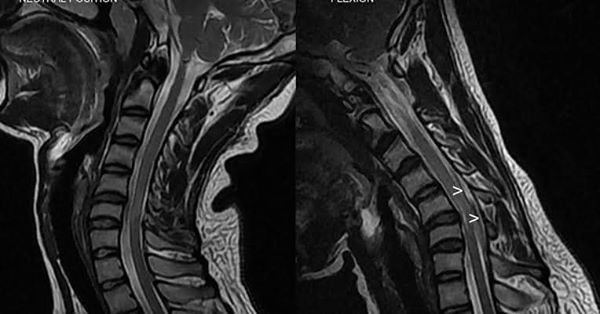Hirayama disease
Hirayama disease is characterized by focal ischemic changes in the anterior horn cells of the lower cervical cord that result in amyotrophy, which is usually unilateral but may also be bilateral. We describe the characteristic findings of flexion magnetic resonance imaging (MRI) suggestive of Hirayama disease.
Cause
Hirayama disease is a rare, lower cervical myelopathy affecting young adults. It is responsible for pure distal motor impairment of the upper limbs, with slow progressive development in the metameric territories of C7 to T1. It is thought to be caused by movements involved in flexing the neck
signs and symptoms of Hirayama
.No pain.
.Weak grip.
.Clawed hand.
.Hand tremors.
.Weak hand muscles.
.Wasted hand muscles.
.Wasting of a single limb.
.Weak lower arm muscles.
